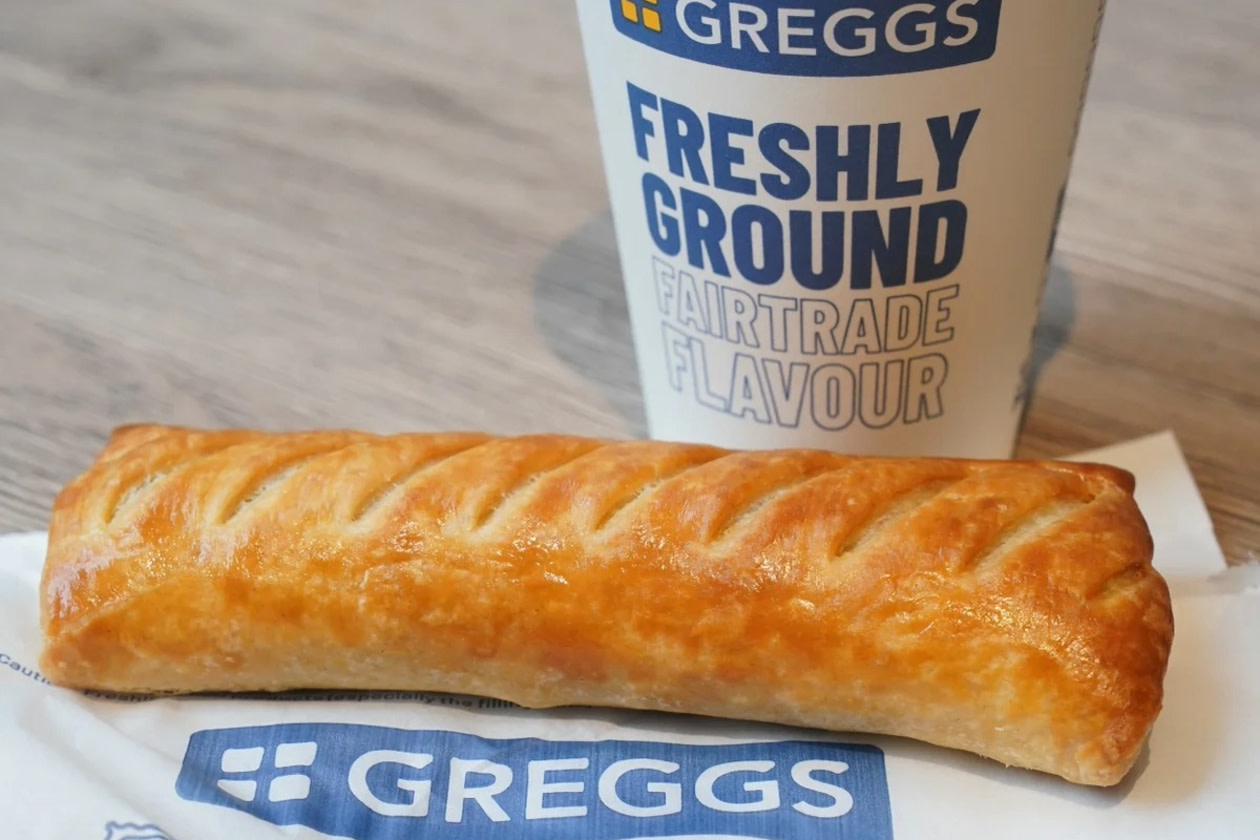Greggs reported sales growth of 7.4% over the first 20 weeks of this year, to £784mn. Like-for-like sales in company-managed shops grew by 2.9%, an improvement from the 1.7% growth seen in the first nine weeks of the year.
The store estate rose by 20 over the period, taking the total to 2,638. Management remains confident in delivering its target of 140-150 net openings this year.
The group’s full year expectations remain unchanged, including anticipated cost inflation of 6%. Market consensus points to revenue growth of 8.0% to £2.2bn for 2025.
The shares were up 6.6% in early trading.
Our view
Greggs has had a solid start to the year, with sales growth picking up thanks to price increases. That’s helping to offset a rise in labour costs. Management highlighted a better trading environment compared to the start of the year, with recent weeks showing positive volume momentum. However, Greggs must ensure price increases don’t exceed customer appetite.
The number of shops is set to rise to 3,000 over the next few years with 140-150 net openings planned for 2025, the menus and stores have been reset, with market share remaining steady. Relying on high-street shoppers and commuter traffic isn't sustainable, so we're particularly supportive of plans to increase its presence at travel locations.
Greggs has worked hard over the last few years to increase the number of franchised shops to around 20%. We're supportive of this model. Compared to the company-owned sites, these locations aren't on the hook for day-to-day costs and continue to perform well, staying ahead of company-managed shops.
Greggs continues to try new growth initiatives including bolstering delivery services and opening later to attract more evening customers. Just under half of Greggs shops now serve until 7pm or later, and with new hot food being trialled this year, they’re giving customers more reason to visit them throughout the day.
One of Greggs' key strengths is that it's a lower-value treat. That makes it more resilient during spells when incomes are being flexed. Leaning into that through the loyalty app, there’s now another valuable avenue to drive sales growth.
The cost picture has taken a turn in recent months following the UK Budget where changes to company taxes are set to rack up costs in the tens of millions. Managing costs in 2025 is going to be a key challenge.
The growing dividend is an added attraction, though nothing is guaranteed. The cash hoard on the balance sheet is expected to be flexed to cover increased growth investment, but that’s precisely what it’s there for.
We continue to be impressed and there's a lot to like about Greggs’ proposition, including its list of growth drivers. While consumers are increasingly value-conscious, the company’s price point looks well-placed to maintain steady growth. But a murky outlook for consumer spending and cost pressures have placed pressure on the valuation, which is some way below the long-term average. We think this presents a better opportunity than there’s been for some time, but would caution that the near term looks uncertain.
Environmental, social and governance (ESG) risk
Consumer services companies are medium-risk in terms of ESG, and very few companies are excelling at managing them. That leaves plenty of opportunity for forward-thinking firms. The primary risk-driver is product governance. The impact of their products on society, labour relations and environmental concerns are also key risks to monitor.
According to Sustainalytics, Greggs’ management of material ESG issues is strong.
Greggs’ overall ESG reporting is not up to par with leading reporting standards, though it has appointed a board-level responsibility for overseeing ESG issues. A very strong environmental policy and a decent whistleblower programme are in place. Executive-level compensation could benefit from some elements being explicitly linked to sustainability performance targets.
Greggs key facts
All ratios are sourced from LSEG Datastream, based on previous day’s closing values. Please remember yields are variable and not a reliable indicator of future income. Keep in mind key figures shouldn’t be looked at on their own – it’s important to understand the big picture.
This article is not advice or a recommendation to buy, sell or hold any investment.No view is given on the present or future value or price of any investment, and investors should form their own view on any proposed investment.This article has not been prepared in accordance with legal requirements designed to promote the independence of investment research and is considered a marketing communication.Non - independent research is not subject to FCA rules prohibiting dealing ahead of research, however HL has put controls in place(including dealing restrictions, physical and information barriers) to manage potential conflicts of interest presented by such dealing.Please see our full non - independent research disclosure for more information.


